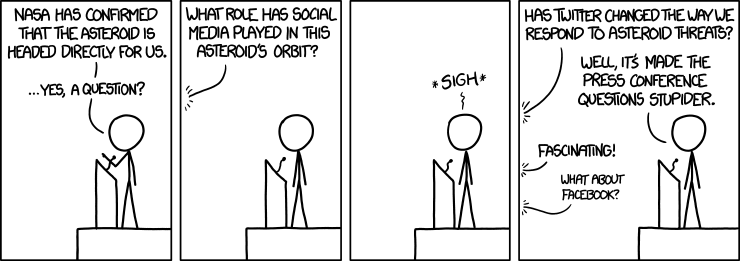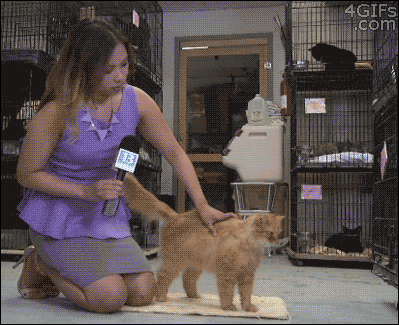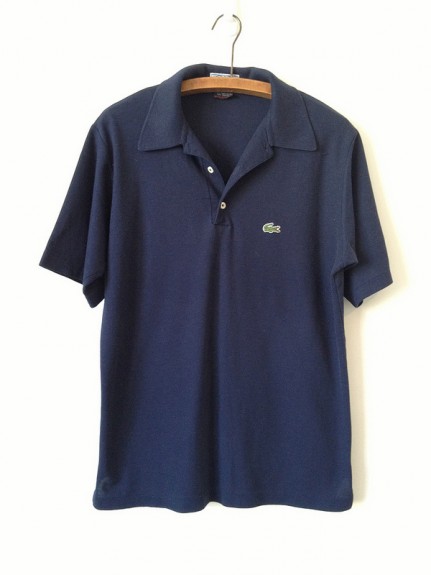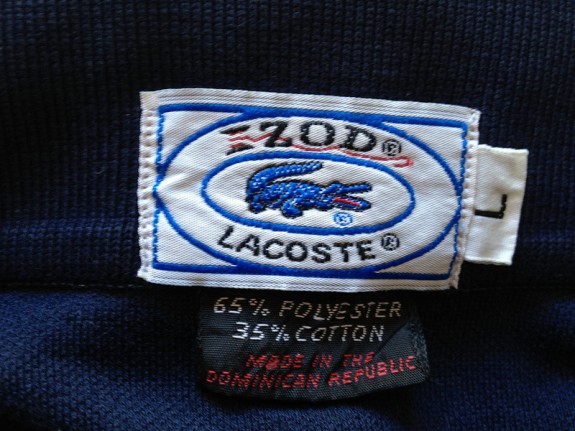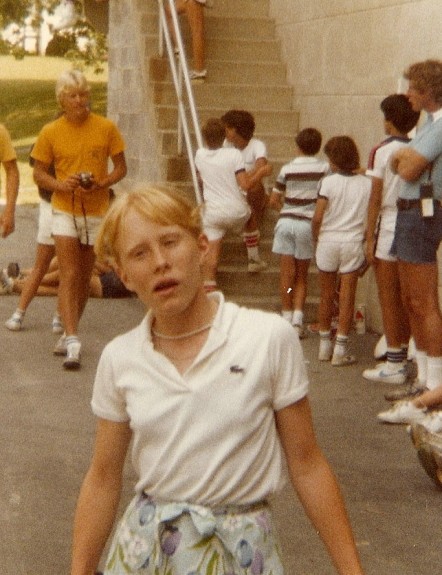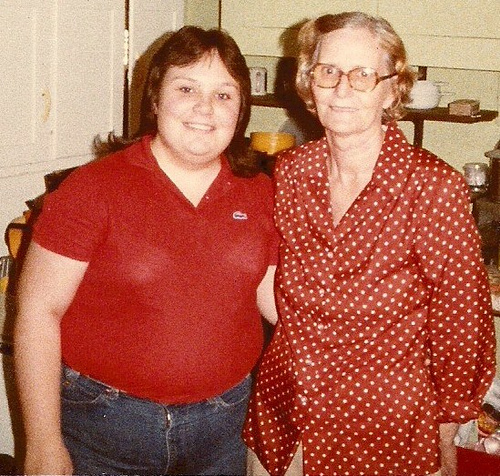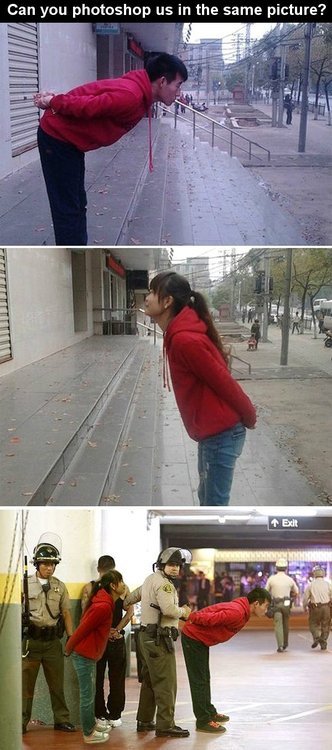Jim Cummings, voice of Disney's Winnie the Pooh, was at Connecticon last weekend, where he performed the scene of Darth Vader boarding Princess Leia's ship from the beginning of Star Wars... in the voice of a certain tubby little cubby all stuffed with fluff. The results were, predictably, glorious.
firehose
Shared posts
Listen to the insanity of Darth Winnie, the Dark Pooh of the Sith
The US is home to one third of the world’s data—here’s who’s storing it

So much of what we do today leaves a digital trail: we swipe credit cards, check in on Foursquare, tweet links and thoughts, connect on LinkedIn, shop on our iPads, and more. Every bit of that information is being stored—but by whom?
The US alone is home to 898 exabytes (1 EB = 1 billion gigabytes)—nearly a third of the global total. By contrast, Western Europe has 19% and China has 13%. Legally, much of that data itself is property of the consumers or companies who generate it, and licensed to companies that are responsible for it. And in the US—a digital universe of 898 exabytes (1 EB = 1 billion gigabytes)—companies have some kind of liability or responsibility for 77% of all that data. That’s the shaded “enterprise touch” data in the chart below.

The most recent data on who’s storing that data are from 2009, and published in a report released today by the McKinsey Global Institute. Although this may have changed some in the last few years, it’s our best guess yet about who actually holds onto a lot of US data.
Investment services companies (which are non-bank finance-related companies) are far and away the biggest hoarders of data; in 2009, big financial services firms on average stored 3,866 terabytes of data. That was almost double the amount of data banks stored. Manufacturing and communications firms also had lots of data. Perhaps surprisingly, communications firms—including social media, which the Census Bureau lumps in with other traditional media firms—rank lower on average in the sheer volume of information they store.
Aside from debates about protecting this data—yes, the NSA may be snooping on you—the problem for the US, according to McKinsey economists, is that its businesses don’t actually utilize all this data well. Industries are only slowly realizing the potential of collecting data and processing it to use to their benefit. Many are grappling with how to process an overwhelming volume of stuff from numerous data sources quickly and accurately.
Doing so could reap big rewards. Better number-crunching in retail and manufacturing alone, McKinsey analysts believe, could boost US GDP by $325 billion by 2020. Retailers that can better plan consumer behavior can make their inventory more efficient. Manufacturers that are better informed about the costs of materials, labor and the health of equipment can make more accurate projections about how much money they’ll need to invest to make something, or whether they should or shouldn’t build a plant.
The biggest obstacle to capitalizing on “big data” is a lack of workers skilled in how companies can break the data down. From the report:
By 2018, the United States will face a shortage of up to 190,000 data scientists with advanced training in statistics and machine learning—and this specialty requires years of study. More broadly, an additional 1.5 million managers and analysts will need enough proficiency in statistics to ask the right questions and consume the results of the analysis of big data effectively.
"Some problems we share as women, some we do not. You [white women] fear your children will grow up..."
|
Courtney
shared this story
from |
|
| / |
““Some problems we share as women, some we do not. You [white women] fear your children will grow up to join the patriarchy and testify against you; we fear our children will be dragged from a car and shot down in the street, and you will turn your backs on the reasons they are dying.””
- Audre Lorde, “Age, Race, Class, and Sex: Women Redefining Difference” (via sundayafternoonsocialclub)
The CIA's Black Bag Crew
"A trillion dollars in student loan debt right now. A trillion right. A TRILLION dollars. We are..."
|
Courtney
shared this story
from |
|
| / |
“A trillion dollars in student loan debt right now. A trillion right. A TRILLION dollars.
We are lending money that we don’t have to kids that will never be able to pay it back, to educate them for jobs that no longer exist.”
- Mike Rowe on Real Time with Bill Mahr (via timetoputonashow)
pretty much
this is how I assume I’m going to feel about this movie.
|
Courtney
shared this story
from |
|
| I STILL haven't seen Man of Steel because I assume I'm going to hate it/myself/life. |

this is how I assume I’m going to feel about this movie.
Fukushima vegetables mutated in viral photos, possibly due to radiation
German Drone Darts Off and Hits Transport Plane On Ground
Read more of this story at Slashdot.
Eric Cantor Pressuring Wife To Try New Political Position
Freaks And Geeks, “Girlfriends And Boyfriends”

“Girlfriends And Boyfriends” (season 1, episode 8; originally aired 1/17/2000)
In which Nick lets Lindsay know she’s his “Lady”
(Available on Netflix.)
In terms of “famous scenes,” Freaks And Geeks has a few, but the one that seems to come up the most often when fans discuss the show together for the first time is Nick serenading Lindsay with Styx’s “Lady,” an act that is somehow much, much worse than him trying to get her to have sex with him when she’s simply not in love—or even like, really—with him. There’s a very simple reason for the scene being so famous, which we’ll get to in a bit, but, really, you should probably just watch it again, because it’s just as cringe-worthy, hilarious, and terrific as you remember it being, and Jason Segel and Linda Cardellini are pitch-perfect in it ...
Read moreLego Movie Videogame is the tie-in to end all tie-ins
The game pits players as Emmet, acted by Everwood star Chris Pratt in the film, the figurine hero of the movie who's mistakenly identified as the Master Builder capable of saving the world. Going by early screenshots, it looks like the game won't deviate far from Traveller's Tales' tried-and-tested formula of platforming, exploration, and construction.
There's no news on whether or not the movie's all-star cast, including Will Arnett (as Batman), Morgan Freeman, Liam Neeson, Will Ferrell, and Elizabeth Banks, features in the game. We'd have to say excluding Arnett in particular would be a huge mistake.
Continue reading Lego Movie Videogame is the tie-in to end all tie-ins
 Lego Movie Videogame is the tie-in to end all tie-ins originally appeared on Joystiq on Wed, 17 Jul 2013 11:30:00 EST. Please see our terms for use of feeds.
Lego Movie Videogame is the tie-in to end all tie-ins originally appeared on Joystiq on Wed, 17 Jul 2013 11:30:00 EST. Please see our terms for use of feeds.
The time a StarCraft supergroup took on Korea
firehoseattn: otters; shared entirely for the rationale behind the screen name "ottersareneat"
By Rob Zacny on July 17, 2013 at 12:00p
America and Europe's top StarCraft organizations get a harsh lesson in Korea.Nobody expected that competing in Proleague, the oldest and most elite Korean StarCraft team league, would be easy. The Korean teams who call Proleague their home have been playing professional StarCraft for a decade, ever since StarCraft: Brood War became a surprise sports phenomenon in Korea, and they routinely recruit and train the best aspiring pro real-time strategy players.
But in their worst nightmares, the owners of the two strongest StarCraft teams in North America and Europe didn't think their combined Evil Geniuses – Team Liquid (EGTL) "dream team" would find itself in last place by a humiliating margin. A daring attempt to steal a Proleague title out from under the Korean teams' noses, one that could vindicate a Western StarCraft scene suffering from low morale and weakening tournament results, was a full-blown debacle by the halfway point of the season. For foreign StarCraft fans, it was as if the 1980 U.S. men's hockey team had gone to the Olympics, forfeited to the USSR, then offered themselves as hostages to the Ayatollah.
With their credibility on the line, the heads of both teams tried to salvage their season by talking to one of the most accomplished Korean coaches in the history of Proleague: Park Yong Woon. In his career as a coach he had never failed to lead a team to the postseason and helped create an eSports dynasty with the SK Telecom T1 team. Now he had to find a way to save EGTL's season and, along the way, teach a pair of Western eSports organizations exactly what it takes to compete at the pinnacle of Korean eSports, where greatness has become a science.
A once-in-a-decade opportunity
A once-in-a-decade opportunity
Team Liquid and Evil Geniuses are the two most prominent and talented non-Korean StarCraft teams in the world. Team Liquid is literally synonymous with the Western StarCraft community. So when the two organizations announced that they would compete jointly in Korea's Proleague, it seemed like the birth of a dream team. Together they had some of the best players in the world who were almost at the peak of their powers, hardened by three years of StarCraft 2 competition.


The timing, it seemed, could not have been better. While Korea is renowned as the home of pro StarCraft, the release of StarCraft 2 complicated things. The Korean eSports Association (KeSPA) that runs Proleague was slow to transition to StarCraft 2 from Brood War, so the seven other Korean teams in Proleague were relatively new to StarCraft 2. Their novice status created a window of opportunity for EGTL, one that's unlikely to open again. It didn't seem like too much to hope that the Evil Geniuses – Team Liquid squad could have a podium finish, or even a championship victory, in the storied Korean League.
Proleague occupies a unique position in eSports. It's a team league, despite the fact that StarCraft is played one-on-one. Its format is what makes the team more relevant than the individual. Classic Proleague format is a seven-game series, each played by a single member of the team. The maps are known in advance, and both teams declare which of their players will play on which map. The other format is all-kill, which follows the old arcade rule where you stay up at the machine for as long as you can take on all comers. In Proleague, little is left to chance. Imagine two football teams who are forced to exchange perfectly complete injury reports, who know exactly what each other's starting lineups and the conditions of the field on game day will be.
"The level of preparation that other teams put into it is incredible," Evil Geniuses CEO Alex Garfield says. "Some teams have a head coach and a dedicated coach for each race. They'll go through and look at every player's streams and past replays, and they'll figure out one strategy on one map to snipe one opponent. So the level of preparation and attention to detail and thought that's required from a coaching perspective is completely unparalleled."
"The level of preparation that other teams put into it is incredible."
This is what we talk about when we talk about Korean StarCraft. Outside the eSports community, and even within it, there is a tendency to treat Korean StarCraft with a degree of Orientalism. Chances are, you've heard some variation on "crazy Korean kids" when it comes to games like StarCraft. As if it were some kind of odd, localized mania for Terrans and Zerg that's led to Korean domination of one of the world's biggest strategy franchises.
But if that somewhat accounts for the rise of pro StarCraft in Korea during the early 2000s, it fails to explain why Korea remains to StarCraft what the United States is to basketball. These days, you have StarCraft fans in the West who are every bit as passionate as the Korean audience, and Western players who are training every bit as hard as their Korean counterparts. Yet Korea still has a lock on the highest honors in the game. And EGTL's elite Western team, packed with Korean pros, was about to find out why.

An ugly pattern
An ugly pattern
By the third round of Proleague, EGTL had been competing well in Korea for two months. The team hadn't been dominant, but it was solidly in the middle of the eight-team pack, fighting for fourth place.
"It started out pretty good," Team Liquid CEO Victor Goossens says. "Even the matches we lost, a lot of them went to ace matches. And we lost those matches, but in the early season, we were competitive every single match. We were in a decent position."
But during round three, EGTL's problems began to surface. The round started poorly, with a pair of 4-1 losses to STX SouL and Samsung KHAN. In the third week of the round, what started as a slump started to look like disintegration. Woongjin Stars, KT Rolster and finally SK Telecom T1 crushed EGTL in a series for 4-0 defeats.


"Our second 4-0 loss in round three was when I started looking for things that were wrong," Garfield says. "You are only one more data point away from a pattern at that point. And when we started looking, we started finding things that were just not good enough."
But diagnosing their team was difficult to do from the other side of the planet, through a series of language and culture barriers. And the people on whose judgment they were relying were a bunch of teenagers and 20-year-olds whose chief expertise is playing StarCraft.
"What a player wants for himself is not always the best for him," Goossens says. "So if you ask him about a situation in the team house, he may enjoy more freedom. He may enjoy waking up whenever he wants. And he may feel like he doesn't want to say there's not enough structure because he's enjoying those things. So if you're running it remotely and you're trying to get all the information from how it's going in the house? It's not that easy to make a clear judgment."
Then there was the problem of trying to get a group of primarily Korean players to speak frankly about conditions at the team house and the current team leadership. "We had a point where we started going to players to get the truth out of them. And this is Korean culture. They're extremely respectful of elders. And they refused to say anything bad about [coach Park Sung Jin] at the time, so we had to basically interpret what they were saying. And after we made the change, they were more open about it. And it turns out our gut feeling was totally right. But it took time to figure out that that was going on."
Turnaround artist
Turnaround artist
As EGTL was floundering in Proleague, and Goossens and Garfield were waking up to the fact that they needed to overhaul their operation, KeSPA approached EGTL with an offer. Coach Park Yong Woon was available as a head coach, having left his position at the powerhouse team of SK Telecom T1 the year before. KeSPA wanted to make the introductions between EGTL and coach Park and help the Western team save its season.
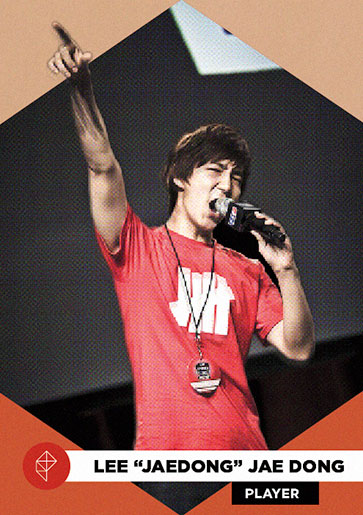
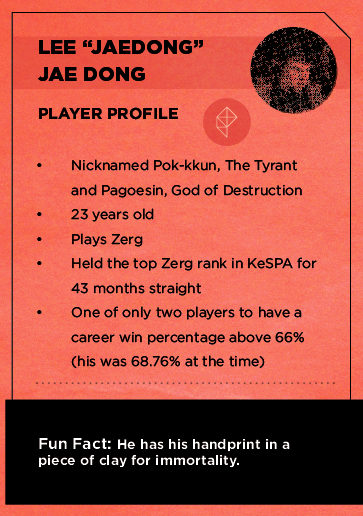
He would cost top dollar, more than just about any top-tier Western player. Esports salaries are notoriously secretive, with top players on Western teams known to be making over six figures. A top-tier KeSPA coach like Park, Garfield and Goossens said, commands an even higher salary. While the Korean eSports Association has created a league where their superstar players can earn even more than that, it was a major expense for EGTL.
If they were lucky enough to hire him, that is. While Park was happy to give EGTL a hearing, and had been following its season with interest, he wanted to make sure EGTL knew what it would be getting into.
Garfield describes EGTL's negotiation with Park Yong Woon as being like the film The King's Speech, when Lionel Logue meets Prince George for the first time, insists on calling him Bertie and subjects him to an interview.
"It was a very 'Lionel and Bertie' kind of thing. 'I haven't agreed to take you on yet.' It doesn't matter who you are," Garfield says. "And that was one of the first indicators that this guy really knows what he's doing."
He picked the team's operation apart from top to bottom, explaining everything from the issues with the roster to the fact that the players' beds in the team house were inadequate. Garfield and Goossens had known they were lagging behind the KeSPA teams, but Park's critique of the operation demonstrated the magnitude of the teams' firepower disparity.
First things first: Park needed more players. EGTL had gone into Proleague with a talented but dangerously shallow roster. While only seven players can participate in a Proleague match, it takes a deep bench to generate a solid lineup from match to match.
"I did not expect great results, even though our team might be good individually."
Goossens admits that they had approached Proleague too much like other leagues and tournaments that the two Western organizations specialize in. "Most international tournaments are played over the weekend. So if you're a player with a high skill level, you go there and perform well, you have a shot at winning. But at Proleague, if you just go in there and play your standard top level game, they are going show you people who have specifically prepared for you. They probably had a whole team of guys that could mimic your play style and have prepared their player accordingly. Meanwhile, there were times when it was hard to just field a lineup, let alone have enough people to practice with each other."
There was also a question of motivation. Lee Jae Dong is the most experienced Proleague player on EGTL, having enjoyed a legendary career as a Brood War player before moving to StarCraft 2. He wasn't surprised that EGTL stumbled so hard, because players didn't have to fight for their positions the way players on larger KeSPA teams do.

"I did not expect great results, even though our team might be good individually," he says. "Proleague is a very long competition and the KeSPA teams thoroughly and systematically prepare for Proleague. The players in those teams are involved in fierce competitions just to play a single match in Proleague, and the big corporations backing these teams are able to give very nice incentives. As a result, the attitudes the players approach Proleague tend to differ, and I think this is what led to our poor results."
The point about the sponsors is also important. Evil Geniuses and Team Liquid enjoy strong sponsorships by the standards of Western eSports: Razer, Twitch, Monster and Intel all number among their backers. They are the rich kids of StarCraft in Europe and the Americas.
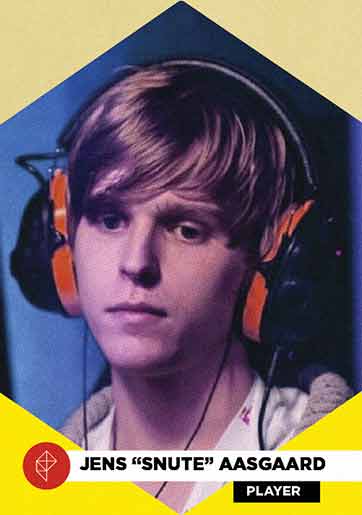

But the KeSPA teams operate on a different plane, supported by some of the largest companies in the country. They are lavishly funded, and their business model allows them to fully dedicate themselves to achieving results in eSports.
EGTL was always going to be operating on a comparative shoestring, but coach Park knew the team needed to adapt much better if it wanted its Proleague experience to end in anything other than disaster. While it couldn't match the Korean teams for resources or infrastructure, it needed to show a lot more discipline and to start thinking and training as a team. Once he had secured his expanded roster, he went about remaking the EGTL team house into a proper Korean team house.
For Park, this meant a place of strict rules, a careful work/life balance and team spirit. Jens "Snute" Aasgaard, a Norwegian Zerg with Team Liquid, joined the team shortly after Park arrived and talks about how a coach multiplies what players can get out of their training.
"I spent a summer in a pro gaming house in Europe. But it can't be compared to this," he says. "We didn't have a dedicated coach. We had a part-time coach who showed us a few new strategies and that was pretty much it. Coach Park actually comes over to me and talks to me about strategies. About how to manage my conditioning. Things that I need to focus on in order to improve my game in general, not becoming too predictable."
It comes down to efficient practice, Aasgaard explains. Ask most any StarCraft pro how many hours a day they practice, and you'll hear anything from seven to 12 hours (although lowballing your practice time is a time-honored psychological warfare strategy among pro gamers). But there is a world of difference between churning through ranked multiplayer StarCraft matches, or doing random scrimmages with teammates, and the kind of workshopping that takes place under an attentive coach. Eight hours a day of StarCraft, working on breaking bad habits or getting comfortable with a wider variety of strategies, will trump 12 hours of self-directed play.
To make sure everyone was practicing as efficiently as possible, Park imposed a new regime on the entire house, and set out fines for players who did not adhere. They cut down on streamed gaming, and rather than streaming whenever they wanted (typically far into the night), he moved it to their morning session so they could get it out of the way and stay fresh for practice. He also wholly dedicated the hours between 10 a.m. and 6 p.m. to StarCraft 2. Players could not so much as open Twitter or a YouTube video during practice time.
Nothing was too small to escape Park's regulatory eye. During the daily lunch break, he started fining players who took food to their desks and ate at their computers. It almost seems needlessly fussy, but in time Park made his meaning clear.
"It's completely standard and normal for most gamers to just eat behind their computer, to not step away from it. Most people have the urge just to not make things too difficult," Goossens says. "So if they're eating and they like to sit at the computer, they're going to eat at the computer. But you also learn that maybe it's better for yourself to step away from it and don't make a mess at your desk. Keep a separation between taking time to eat and sitting behind your computer."
"People resist change, but literally immediately after coach Park started, several players messaged me, telling me that this was great."
Imposing the same rules across the house also turned a group of individual eSports stars into a real team. But Park was more than a disciplinarian and taskmaster. Park made a special point of taking the team out on mountain hikes, having them do team-building exercises and watching movies as a group. He would gamely chat with his international players, despite a mutual language barrier, relying on context and enthusiasm to bridge the gap. The team of mismatched Koreans and foreign StarCraft pros and coaches would get by on poor English and Korean, and a lot of StarCraft terminology.
The team responded. "People resist change," Goossens says. "But literally immediately after coach Park started, several players messaged me, telling me that this was great. They could already feel the better atmosphere, already felt more motivated. They felt healthier. So maybe they weren't asking for that change, but the moment it happened, they saw it was a good thing for all of them."
Despite their grim losing streak and poor odds of making the playoffs, Park's team was surprisingly unruffled. "Everyone is trying their best, and we're all strong individuals," Aasgaard says toward the end of the season. "When we started to improve, it affected the team in a positive way. But it all stabilizes after a while. The losses. The wins. They eventually fade away, and things get serious. We just do our best."
Conclusion
Conclusion
Park's remedies for EGTL seem obvious: train harder and smarter, work better as a team, be more disciplined and hire more veterans. These are all classic sports management cliches, as likely to be uttered by a caller to a drive-time sports radio show as a championship-winning coach. But few people can breathe life into those hoary truisms and use them to animate a team. Park is one of them.
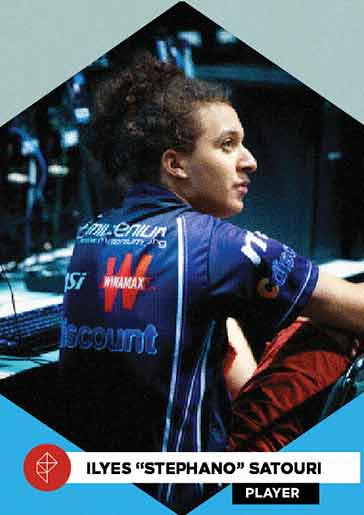
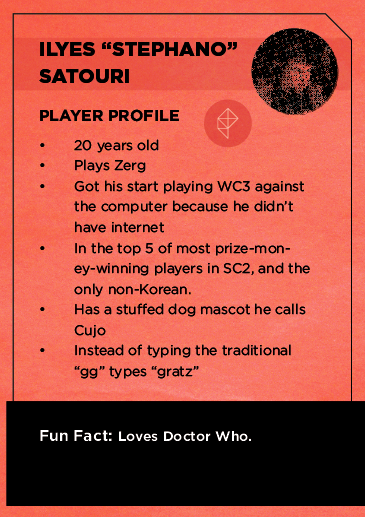
"You need someone whose job it is to work with players on everything from their tactics to their mental acuity. Should they go the gym, to regulating a practice room environment so that people are only playing StarCraft from 10 until 6 and then they can do other things on their computers after that," Garfield says. "The thing is, finding that person and actually pulling it off is a lot harder than people think. Because you can't just have it be one of the team's buddies; you can't have it be another 20-something. It needs to be a person who can command respect and be a leader. And that is, in my opinion, an older representative who actually understands the game. That is a very hard person to come by in the West."
Still, coach Park and the reformed EGTL squad could not work miracles, especially after round three left them so far behind. The team rallied to once again become a creditable competitor, never quite managing to win the majority of their matches in each round, but avoiding any further disasters. A last or near-last place finish is likely cold comfort to EGTL and its fans, but it at least was able to close the distance on the rest of the field. Had it avoided its mid-season slump, and won a few of its close matches, it would have been in position for a late-season run at the playoffs.
Most sports teams can always look forward to next year, but the future is not so clear for EGTL. For both Evil Geniuses and Team Liquid, it's at once hard to justify the expense of making another attempt at Proleague and painful to abandon the lessons they have learned and the progress they have made.
"Whether we're in Proleague next year or not," Garfield says, "do we keep a Korean training house now? How could we not keep a Korean training house, because it's still the best practice environment in the world, with the right coach and right facility."
Park may not have kept his playoff streak alive, but he did show Evil Geniuses and Team Liquid what it takes to create an organization capable of competing against the very best StarCraft players in the world. He and the KeSPA programs he represents are in the business of winning. For a Western eSports audience that is tiring of big personalities and small results, Park's system and methods may represent the future. It's just a long way to get there. 
Photos: David Zhou, MLG, Joey Thimian
Editing: Russ Pitts, Matt Leone
Design / Layout: Warren Schultheis, Matthew Sullivan
Special thanks: John Funk
Post-Credits Scene
The 1998 Videogame Spyro The Dragon, the ending hints at a sequel. In 1999 the game got a sequel, Spyro 2 Riptos Rage.
“Drunkard,” “homoerotic,” and other words your iPhone won’t help you type
firehose'asserting that "rape" is a word that would be used "so rarely" when nearly 1/5 women in the US have been sexually assaulted or raped is, say it with me now, part of rape culture.'
|
Courtney
shared this story
from |
|
| asserting that "rape" is a word that would be used "so rarely" when nearly 1/5 women in the US have been sexually assaulted or raped is, say it with me now, part of rape culture. |
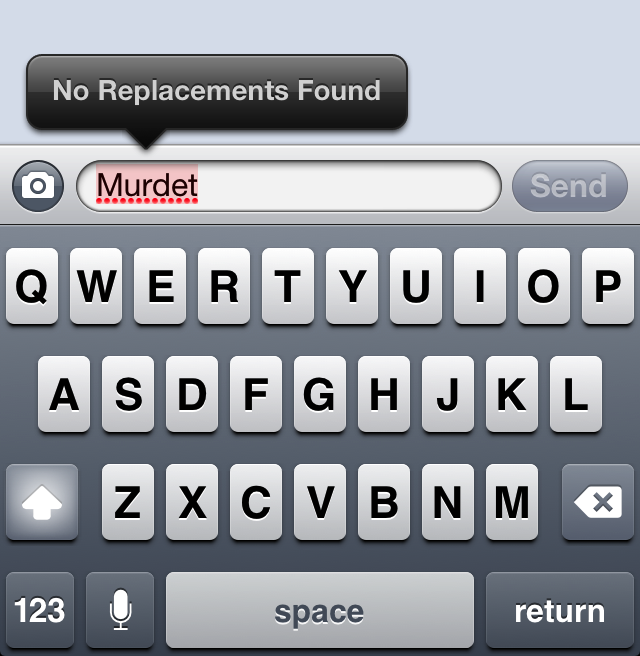
Anyone who sends obscenity-laced iMessages to their friends already knows that there are certain words that iOS' auto-complete feature just won't help you finish. I've had many a swear remain mistyped or, worse, get corrected to anon-swear despite fairly obvious typos.
Those aren't the only words that iOS won't help you type, though. The Daily Beast has gone through the iOS dictionary and found about 14,000 words that appear to be spelled correctly when typed correctly, but the built-in spellcheck tool won't help you fix them otherwise (at least, not before you type the words enough that the phone adds the terms to your custom dictionary). They found that many of them were simply obscure—words like "sheepshank," "sempstress," and "nephrotoxin" made this list. However, there were plenty of others that are perfectly common but more likely to be objectionable. The following words made their highlight reel.
- abortion
- abort
- rape
- bullet
- ammo
- drunken
- drunkard
- abduct
- arouse
- Aryan
- murder
- virginity
- bigot
- cuckold
- deflower
- homoerotic
- marijuana
- pornography
- prostitute
- suicide
For the obscure words, the piece speculates that Apple just didn't want to consume space in the stock spellchecking wordlist with words that would be used so rarely. Jillian York, On the other hand, Electronic Frontier Foundation director for international freedom of expression, Jillian York, suggested that Apple's omission of the more frequently used but potentially sensitive words came close to censorship. It "isn't censorship outright," she said, "but it is annoying, and it's denying choice to customers."
Read 1 remaining paragraphs | Comments
Macon & Lesquoy’s Hand-Embroidered Objects Are Tiny, Irreverent Nods To Military Decorations
|
Courtney
shared this story
from |
|
| uh I need the red wine glass need need need |

There’s nothing like a surprise package in the mail. Especially when it’s not even your birthday or Christmas or anything! Last week we were the recipient of a little envelope from Paris containing the most adorable thing we’ve seen since the last time we looked at the Daily Puppy Instagram feed. Our buddy Catrin had seen this tiny red and white embroidered pill pin in Paris and instantly thought of us. No, it’s not because we have an addiction to prescription meds, it’s because we are always asking our family and friends to bring us Solpadeine from that side of the pond when they come to visit. What can we say? It’s our favorite headache cure. The pin is made by two French friends, Macon & Lesquoy, who hand embroider tiny objects including cigarettes, knives, paintbrushes, burgers, wine glasses and basically anything you can think of. The two are inspired by the precision and detail of military decorations, creating high quality patches, pins and other accessories all with an eye to irreverence. Choose from adorable individuals or entire pin sets that you can even hang as fun art pieces on your wall.
From around $10 at Maconetlesquoy.com
D3's next Adventure Time game is a Diablo-inspired dungeon crawler
firehose"But instead of having this super hardcore 100 hour RPG where you have to min-max everything, we just wanted it to be fun"
burrrrrrrrrrrrn
WayForward Technology's follow-up to last year's Adventure Time game, Adventure Time: Explore the Dungeon Because I DON'T KNOW!, is an action adventure dungeon crawler inspired by Diablo, according to its developers.
Made by the same team that worked on 2012's Adventure Time: Hey Ice King! Why'd You Steal Our Garbage? — a 2D side-scrolling adventrue game also published by D3 — Explore The Dungeon features a brand new storyline with 3D design, more than 100 dungeons to explore and up to four-player co-operative play.
Speaking to Polygon, Explore The Dungeon's producer Aaron Blean said the game is much bigger than its predecessor and involves more complexity. The game is centered around Candy Kingdom and a secret royal dungeon that Princess Bubblegum uses to hide the worst creatures from the Land of Ooo. When these creatures start to break out of the dungeon, she calls upon Jake and Finn to venture into its depths to find out why and how they are escaping.
Players will be able to take on the role of any of a number of Adventure Time characters. During a demo that Polygon played, we could choose from Jake, Finn, Marceline and Cinnamon Bun, although more characters will be revealed later. The game supports up to four players, and each player will be able to use a character that has different stats and powers, all of which can be tweaked through game tokens.
"Where the first game was strictly a side-scrolling adventure game with a top-down mini-map, kind of like a Zelda 2, this is more of a top-down three-quarter perspective Diablo/Gauntlet-style game," Blean said. "But instead of having this super hardcore 100 hour RPG where you have to min-max everything, we just wanted it to be fun. We also wanted it to have enough meat there so if you were that type of gamer, you could still play it and have the fun you want."
"This is more of a top-down three-quarter perspective Diablo/Gauntlet-style game."
In the demo Polygon played, we were able to spam attacks to get by, but when we employed a bit of strategy and thought about our character's abilities, we were more effective as a team. For example, Cinnamon Bun is a kind of tank character who can take more damage, whereas Marceline is a wizard-like character who can absorb red projectiles from afar. Each character has innate abilities, so when we approached a boss (the Demon Cat with the power of approximate knowledge), we were able to assign Marceline to the enemy's tail because it was shooting out red beams, while the melee characters approached it from the front and sides.
Each character also has an Imagination Meter which, when filled up, can be used for special attacks. Some characters' special attacks wipe the screen of enemies, while others — like Cinnamon Bun — drop food items all over the screen, which could then be picked up by teammates and used to restore health.
"We've got characters who are tanks, we've got a character who shoots projectiles, we've got melee characters and wizard-like characters, and if you play Diablo a lot you will able to spot it — you'll see the strategy and get it right away," said game director Tomm Hulett. "But if you're not into that, you can just get in there and have fun with Adventure Time."
Players will traverse more than 100 different dungeons and there will be several environment types, ranging from the typical gritty dungeon to an ice dungeon to one made of ancient ruins.
Adventure Time: Explore The Dungeon Because I DON'T KNOW! is coming to the Xbox 360, PlayStation 3, Wii U, Windows PC and 3DS this fall.
BitTorrent’s serverless P2P sync software hits beta, adds Android support
firehoseVersioning
BitTorrent, Inc. today plans to release a beta version of BitTorrent Sync, software that provides Dropbox-like syncing using the same peer-to-peer file sharing technology that powers BitTorrent clients. Some new features—including "mobile apps and an archive capability for retrieving previous versions of synced files," BitTorrent said—have been added since we went hands-on with the alpha version of the software back in April.
The first mobile app is for Android; an iOS version will follow soon.
The "SyncArchive" feature "is a basic versioning capability introduced with the Beta. It will include a folder where you can see all previous versions of your files," BitTorrent's announcement said. "Unobtrusive and searchable, this feature has been in high demand and will evolve over time."
Read 9 remaining paragraphs | Comments
SDCC ’13 | Archaia to publish Alyssa Milano’s ‘Hacktivist’
firehose'The book began as an idea by actress Alyssa Milano after she learned about that world through her philanthropic endeavors and her friendship with Twitter creator Jack Dorsey.
“I’m very involved with in global activism and philanthropy,” Milano said in a statement. “I like the idea of everyday people doing good. I picture [Dorsey] leaving the office at night and going home, where he locks himself in his room and starts hacking to change the world.”
In this fictional story, the two founders of an upstart social-media service are discovered by the U.S. government to be one of the foremost “black-hat hacker teams” in the world, setting them on a path to question what’s right and decide what’s best for themselves and the world.'
uhh
and it’s hot too
firehosevia otters: "autoreshare forever"
and I shared it, too
and it’s hot too
Codefellas EP4: The AntiSocial Network - WIRED
firehosenew Codefellas
David Rees beat; John Hodgman beat; fluoridation beat; beep boop robot beat
|
Agent Topple is alarmed by an urgent alert from the PRISM program followed-up by a shocking revelation by Nicole. These overwhelming discoveries leave him in...
|
From:
wired
Views:
60556
    
701
ratings
|
|
| Time: 03:01 | More in Entertainment |
Questlove: Trayvon Martin and I Ainât Shit
firehosevia otters
"Imagine a life in which you think of other people's safety and comfort first, before your own. You're programmed and taught that from the gate. It's like the opposite of entitlement."
The Roots drummer on the George Zimmerman verdict.
Photo
firehosevia Toaster Strudel
a scene from the dog version of The Silence of the Lambs

The Story Behind the Lacoste Crocodile Shirt
firehosevia Russian Sledges
![]()
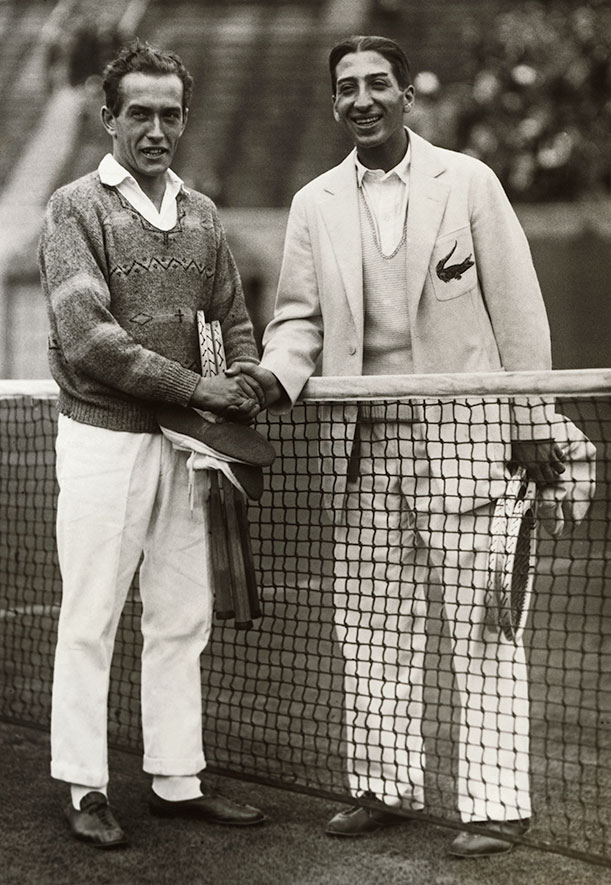
When French tennis players Henri Cochet and René Lacoste met at the net in this undated photo, Lacoste was sporting his signature crocodile on his blazer.
© Underwood & Underwood/Corbis
Frenchman René Lacoste was a superstar tennis player. In 1926 and 1927, he was ranked number one in the world, and during his tennis career, he won seven Grand Slam championship tournaments. But he found the attire associated with the sport restrictive. Tennis whites, as they were called, consisted of a white, long-sleeved button-down shirt, long pants and a tie. It was a lot of clothing to wear when racing to the net to make an overhead shot.
Lacoste was seeking a shirt that was more accommodating to movement. In a 1979 article from People magazine, he elaborated:
“One day I noticed my friend the Marquis of Cholmondeley wearing his polo shirt on the court,” remembers René. ” ‘A practical idea,’ I thought to myself.” It was so practical, in fact, that René commissioned an English tailor to whip up a few shirts in both cotton and wool. “Soon everyone was wearing them,” he smiles.
One school of thought attributes the shirt’s invention to meeting the needs of British polo players in India in the 19th century. The style was emulated in the U.S. by John Brooks, grandson of the founder of Brooks Brothers, after he saw polo players wearing the shirts in England in the late 1800s–hence, the reason we still call it a polo shirt today. It was also referred to as a tennis shirt—piqué knit cotton, short-sleeved, unstarched collar, a placket opening with buttons at the neck, and a “tennis tail” to help keep the shirt tucked in. (That tail even made an impression on artist-poet Joe Brainard, who, in his book-length poem I Remember includes the line: “I remember when those short-sleeved knitted shirts with long tails (to wear ‘out’) with little embroidered alligators on the pockets were popular.”) In 1926, Lacoste first sported the shirt when he played in the U.S. Open in New York City.
Around that same time, Lacoste was dubbed “The Crocodile” by his fans and the media for reasons that are still speculative today: his athletic boldness, his pointy schnoz, and a bet. As GQ explains:
The American press dubbed him the Alligator in ’27, after he wagered for an alligator-skin suitcase with the captain of the French Davis Cup team. When he returned to France, “alligator” became “crocodile,” and Lacoste was known forever after as the Crocodile.
Not only did he embrace the nickname, but he went all out and had a logo of the reptile embroidered onto his blazer. It became his personal brand before there was such a thing.
Once he retired from tennis in the early 1930s, he started the company La Chemise Lacoste with his pal André Gillier, president of the largest French knitwear company at the time, to produce and sell crocodile-emblazoned shirts. The Lacoste tennis shirt made its way to the United States in 1952 and was carefully branded as “the status symbol of the competent sportsman,” an attempt to establish Lacoste in the upper echelons of society.
But, you’re confused, right? Isn’t the crocodile logo associated with Izod? That’s where things get complicated. Lacoste wound up in the United States because it had licensed its brand to Izod (then called Izod of London), which had been seeking out an upscale product.
Izod Lacoste, as the brand became known, initially looked like a flop; there weren’t many customers in the early ’50s for a pricey polo shirt (about $8 then) with a small crocodile sewn onto the chest. But Vincent De Paul Draddy, who originally licensed the Lacoste name for Izod, had a brilliant idea. He provided Izod Lacoste swag to some of his famous buddies, including JFK, President Eisenhower and Bing Crosby, and from there, the shirts caught on, and became easy to find in department stores. People were happy to wear them, especially if the rich and famous were already fans.
In the 1970s and ’80s, sporting an Izod, as the shirts became known, spanned across generations. Teenagers, and particularly those who wanted to assume a preppy look, embraced the style, even popping the collar to assume the full Biff and Muffy look. (See the 1980 book The Official Preppy Handbook by Lisa Birnbach, for more on how the Izod shirt was a key ingredient to achieving that look, or listen to Three 6 Mafia’s Poppin’ My Collar from 2006 for a more contemporary interpretation.)
By the early 1990s, the trend was fading. Lacoste and Izod parted ways in 1993 (Lacoste went further upscale; Izod became more moderately priced and abandoned the crocodile.)
Over the years, the shirt and its iconic logo spawned many imitators and admirers. Designers and brands from diverse price points have taken to embroidering animals onto polo shirts: ponies (Ralph Lauren), marlins (Tommy Bahama), eagles (American Eagle), and even the crocodile itself! The Chinese-based company, Crocodile Garments, was locked in a legal battle with Lacoste over the rights to the crocodile for over a decade until, in 2003, Crocodile Garments conceded to changing its logo. According to CNN, the settlement stated that Crocodile Garments would “have a croc with a tail which rises more or less vertically and it has skin which is much more scaly. It also has bigger eyes.”
Not only was Lacoste, who passed away in 1996, around to see multiple animal-emblazoned polo shirt imitators, but he also was privy to the fashion evolution that took place on the courts–from the whitest of full-coverage tennis whites to the shortest of itty-bitty tennis shorts (thanks, John McEnroe and Jimmy Connors).
Fuck your art that blocks your window.
firehosevia Russian Sledges

Fuck your art that blocks your window.
HaleytheHedgehog VS. SammyClassicSonicFan: Zelda Debate I am so...




HaleytheHedgehog VS. SammyClassicSonicFan: Zelda Debate
I am so happy that this debate exists. Thank you, HaleytheHedgehog and SammyClassicSonicFan, ya fricks. And thank you, Lucillesballs, for the GIFs.
Guess what? You can watch the heated four-minute argument after the break:
PREORDER The Legend of Zelda: A Link Between Worlds, upcoming releases












